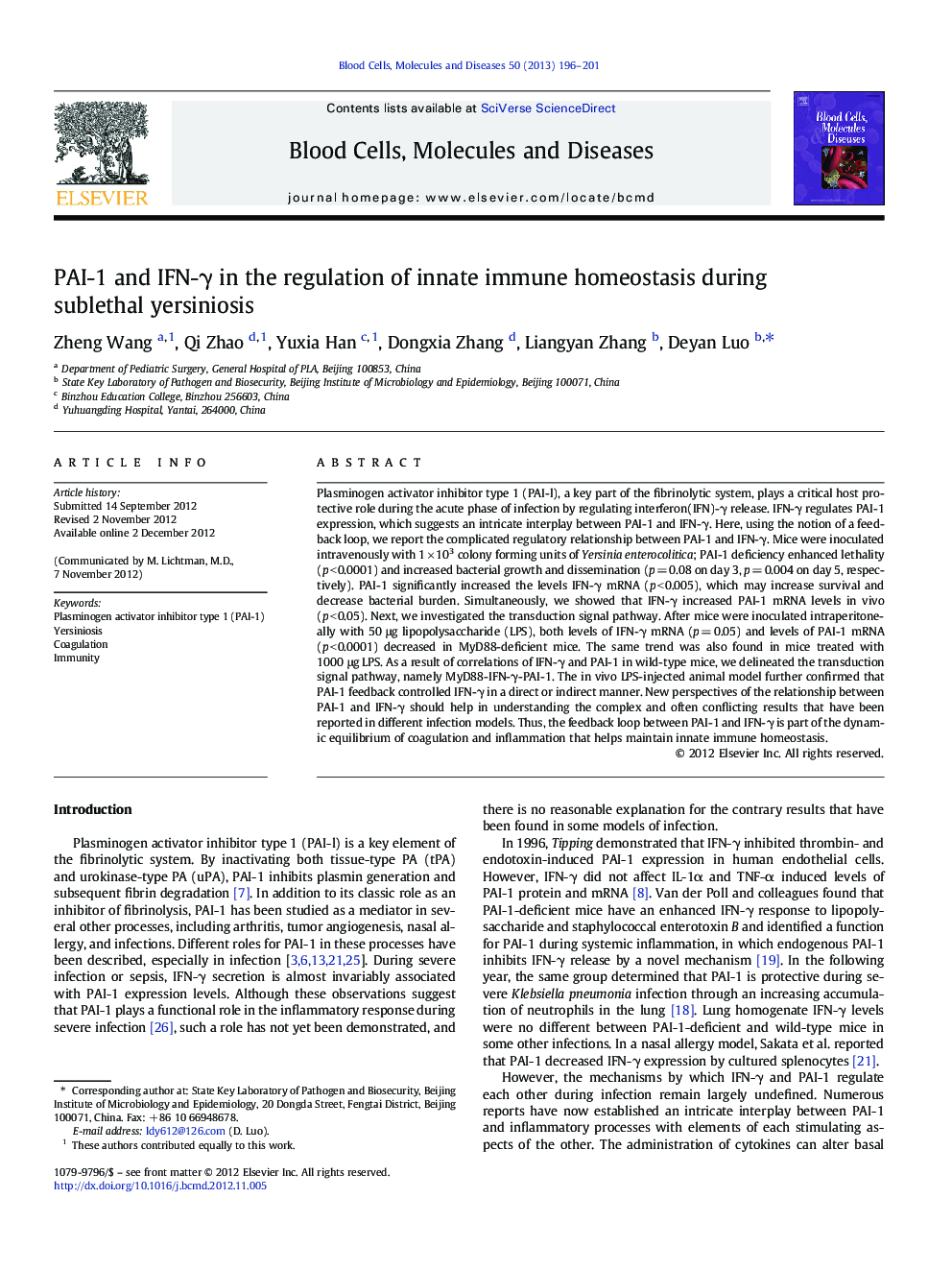| Article ID | Journal | Published Year | Pages | File Type |
|---|---|---|---|---|
| 2827394 | Blood Cells, Molecules, and Diseases | 2013 | 6 Pages |
Plasminogen activator inhibitor type 1 (PAI-l), a key part of the fibrinolytic system, plays a critical host protective role during the acute phase of infection by regulating interferon(IFN)-γ release. IFN-γ regulates PAI-1 expression, which suggests an intricate interplay between PAI-1 and IFN-γ. Here, using the notion of a feedback loop, we report the complicated regulatory relationship between PAI-1 and IFN-γ. Mice were inoculated intravenously with 1 × 103 colony forming units of Yersinia enterocolitica; PAI-1 deficiency enhanced lethality (p < 0.0001) and increased bacterial growth and dissemination (p = 0.08 on day 3, p = 0.004 on day 5, respectively). PAI-1 significantly increased the levels IFN-γ mRNA (p < 0.005), which may increase survival and decrease bacterial burden. Simultaneously, we showed that IFN-γ increased PAI-1 mRNA levels in vivo (p < 0.05). Next, we investigated the transduction signal pathway. After mice were inoculated intraperitoneally with 50 μg lipopolysaccharide (LPS), both levels of IFN-γ mRNA (p = 0.05) and levels of PAI-1 mRNA (p < 0.0001) decreased in MyD88-deficient mice. The same trend was also found in mice treated with 1000 μg LPS. As a result of correlations of IFN-γ and PAI-1 in wild-type mice, we delineated the transduction signal pathway, namely MyD88-IFN-γ-PAI-1. The in vivo LPS-injected animal model further confirmed that PAI-1 feedback controlled IFN-γ in a direct or indirect manner. New perspectives of the relationship between PAI-1 and IFN-γ should help in understanding the complex and often conflicting results that have been reported in different infection models. Thus, the feedback loop between PAI-1 and IFN-γ is part of the dynamic equilibrium of coagulation and inflammation that helps maintain innate immune homeostasis.
